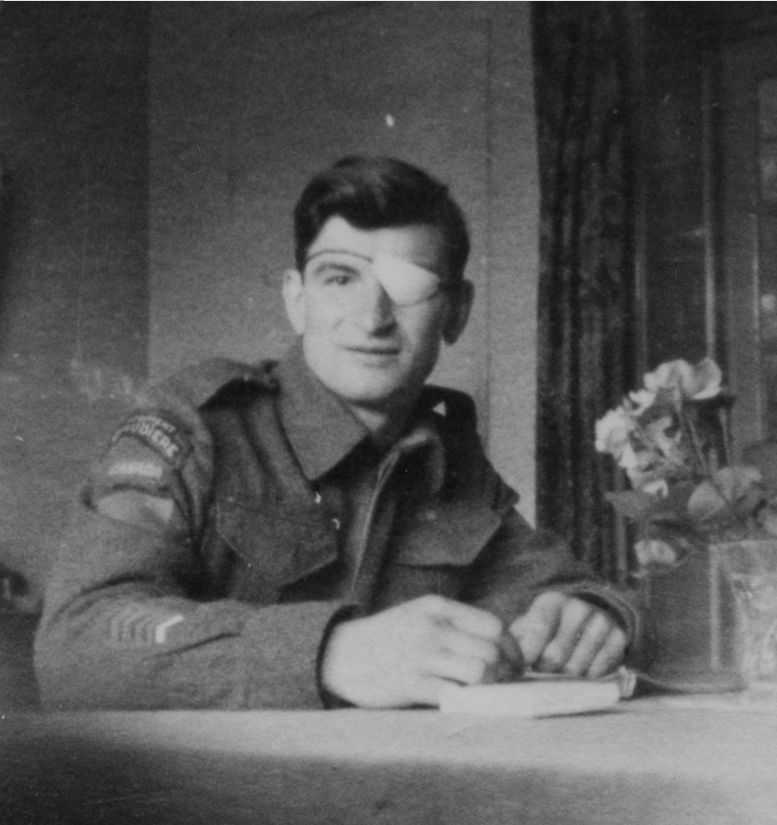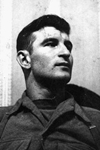Now It Can Be Told! - How Royal Marines Hacked a Base From Jungle
The War Illustrated, Volume 9, No. 214, Page 268-269, August 31, 1945.
The dramatic story of another secret war port was revealed by the Admiralty in July 1945. It is the story of "Port T" – a naval base with full defences – hacked out of the jungle on Addu Atoll, a collection of waterless coral islets in the Indian Ocean, 590 nautical miles from Colombo and 3,000 from Australia.
Like the Mulberry, Pluto (page 120) and Fido (page 140), "Port T" was always known by its code name. Absolute secrecy was essential, for this port was a vital link on the convoy route to Australia and for certain operations in the Indian Ocean. Now it is possible to tell how a force of Royal Marines drawn from the first Mobile Naval Base Defence Organization, working against time and tropical disease, began preparing this secret Fleet anchorage, while the Japs were still planning their attack on Pearl Harbour.
The Royal Marines went ashore on Addu Atoll in September 1941. Their task was to establish coastal batteries, searchlights, signal towers, roads, camps, and jetties for a naval base. The price they paid was heavy; 23 per cent of the whole force had to be evacuated in the first three months by the hospital ship Vita, as too ill to be of further service, but by the time Japan declared war the base was ready, and on January 3, 1942, the first convoy of the five troopships, escorted by the cruiser H.M.S. Emerald, put in to water and refuel.
The atoll, in the extreme south of the Maldive Islands, consisted of a rough triangle of coral islets, surrounded by a coral reef which enclosed a deep lagoon. On four of the islands – Gan, Hitadu, Midu, and Wiringili – coastal batteries and searchlights were required while Gan was developed as the main base. When the First Royal Marine Coast Regiment and the Landing and Maintenance Company of the M.N.B.D.O., under the command of Lieut.-Colonel W. B. F. Lukis (now Major-General Lukis, C.B.E.), first reached Addu Atoll they were faced with virgin jungle without roads, landing places, or the most primitive amenities. The great swell of the Indian Ocean broke in a perpetual surf on the coral reef; tall palms towered above the islands.
But the disadvantages of this apparent island paradise soon made themselves felt. The climate was hot and very damp. Flies, mosquitoes and rats were plentiful. Practically every drop of water had to be shipped to the atoll and landed across the beach. Supplies were seldom sufficient to allow for washing.
Ate the Skin From the Flesh
The Royal Marines soon found that every small scratch immediately turned septic and developed into an ulcer that refused to yield treatment. The humid climate favoured the growth of micro-organisms that literally ate the skin from the flesh, while the diet of dry or tinned food with no green vegetables or fresh fruit reduced a man's natural resistance to such infections.
Soon a form of scrub typhus, born of the rats and their parasites, broke out. While working, a man would suddenly fall unconscious without having previously complained of sickness. A violent fever followed for fourteen days, leaving the victim weak and debilitated. Malaria also appeared in malignant form, but never became a serious menace owing to the strigent anti-malarial precautions. The rapid deterioration of tinned food caused the Quartermaster great anxiety and gave rise to occasional food poisoning.
But work was pushed on with relentless speed, First, landing-places had to be improved by blasting away the coral, then sites cleared in the jungle for camps. Roadways to take heavy guns and equipment had to be cut through the scrub to the battery sites before the work of gun-mounting could begin. The natives, though friendly, were timid and easily amused. For instance, they roared with laughter at the sight of the lorries landed to transport the guns. They were willing to help but could do little but aid in stripping vegetation from the sites.
The programme required the guns to be mounted in six weeks, and in six weeks to the day the batteries fired their proof rounder – but not before the Devon and Kent batteries of the R.M. Coast Regiment working on Hitadu and Midu had been reduced by sickness to less than 50 men apiece.
On Hitadu, the four-mile roadway from landing-place to battery site had to be laid across a swamp infested by giant land crabs. The major in command stripped and led his men thigh-deep into the black, foul-smelling mud to lay foundations with palm fronds lashed into bundles of ten. The running surface destined to carry 13-ton wheeled loads was made with prefabricated track and crushed coral held together with the trunks of palm trees staked down. Another road on Midu was entirely built by a corporal and six Marines continuously at work for two months. They used cord as the hard core, with a top dressing of earth and sand.
The islands were swept at regular intervals by torrential storms that washed away the road surfaces and flooded clearings and gunsites. Unloading ships could only take place at certain stages of the tide, so that it had to continue day and night, with men working two six-hour shifts in twenty-four.
Yet by December 8, when news of Japan's entry into the war reached the islands, the anchorage was already in a state of defence; only camouflaging, administrative installations and the completion of the war signal station remained to be done.
To improve communications a tabular bridge was built between the islands of Midu and Hera, and on Wiringili a channel was cut between the sea and a mosquito-breeding lake, so that the brackish water became tidal and the mosquito larvae were killed. Later still the islands were linked by causeways. When later in the year the Marines of the landing-party returned to Addu Atoll with a company of Royal Marine Engineers to build an aerodrome, they witnessed the most stirring sight in the history of the islands – they saw the Queen Mary herself, carrying home Australian troops from the Middle East, steam into the anchorage that they had built.
Previous and next article from Now It Can Be Told!
Now It Can Be Told! - We Ferried Invasion Trains to France
While planning the invasion of the Continent it was realized that as soon as we were established on the far shore railway communications behind our lines would be of major importance and that locomoti
Now It Can Be Told! - Goebbels Tried to Make Peace Terms
As the Nazi Reich lay in its death agonies, Goebbels offered to play Judas to his master, Adolf Hitler, and take over the leadership of a reorganized German Government which would conclude an armistic
Index
Previous article
Thoughts on the Peace of Potsdam
The Berlin Conference of 1945 will long be remembered as one of the red letter events in world history; its importance outweighs that of the once celebrated Congress of Berlin (1878) as greatly as the
Next article
Now It Can Be Told! - Goebbels Tried to Make Peace Terms
As the Nazi Reich lay in its death agonies, Goebbels offered to play Judas to his master, Adolf Hitler, and take over the leadership of a reorganized German Government which would conclude an armistic





